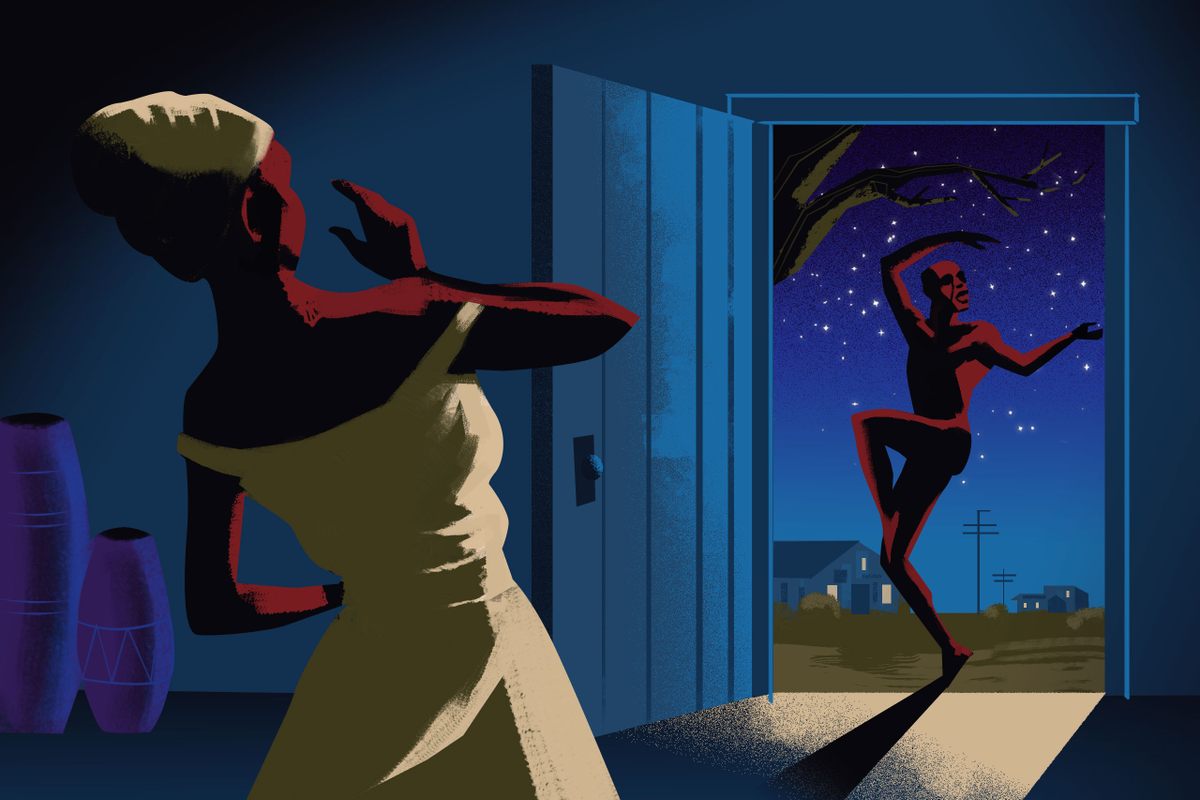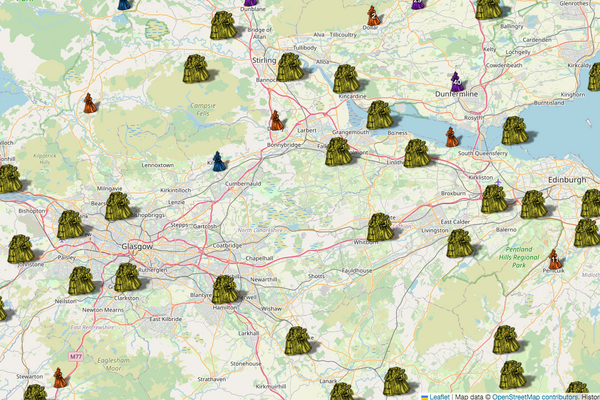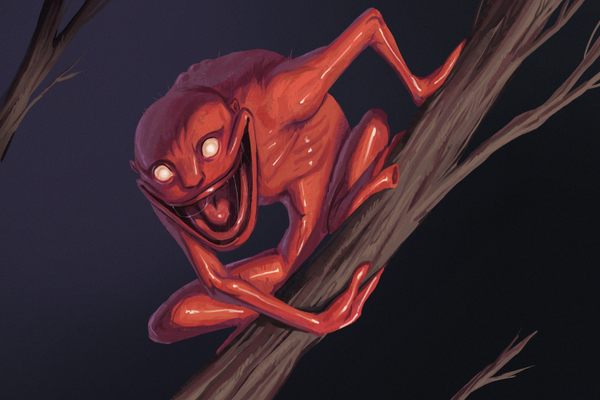
The Mysterious, Naked Night Runners of Western Kenya
“When the wind blows you run away because you think it’s a night runner.”
Truphena Ombiri will never forget the first time she saw a night runner. She was at home in Homa Bay on the banks of Lake Victoria in western Kenya when she heard a tap tap tap on her door. She went out to check who it was and what she saw shocked her–though the sight wasn’t entirely unexpected. “When I came out he just looked at me and started shouting,” she says.
Outside, a man was running around naked, his face covered in ash, obscuring his identity in the tight-knit community. Ombiri knew straight away that this man was a night runner. She’d heard enough stories about them growing up to know what she was seeing. “When the wind blows you run away because you think it’s a night runner,” she says.
Stories about night runners in western Kenya are widespread, though like the spooky sprinters themselves, facts are elusive and shrouded in mystery. In the only paper to specifically study night running, Tom Kwanya of the Technical University of Kenya writes that there’s scant research due to stigma against Indigenous knowledge in Kenya. Through interviews in Dholuo, the local language of Homa Bay, as well as a review of research dating back to 1901, Kwanya concluded that night runners are everyday people—men or women of any income class—who do strange things at night like throwing sand on tin roofs, shaking trees and knocking on doors. “[Night running’s] basic goal is not exercise but to frighten and poke fun at the victims,” he writes.
In many rural areas but also in cities like Kisii, Kwanya found that night runners are believed to inherit the practice from their parents, through marriage, or out of personal fascination; a book called Fire and Vengeance published in 1975 mentions how a European man teaching high school in Homa County started night running in the nude.

While night runners are mystifying, most consider them harmless. The night runner that Kwanya interviewed said the only people to be hurt or killed in an encounter suffered from fright-related health implications. That said, they’re still a nuisance to many. “They annoy you sometimes,” Ombiri says. “They throw stones on your roof when you’re sleeping. Imagine that… How are you sleeping?”
The spotlight has been shining on the activity since 2013 when the self-proclaimed president of the Kenya Night Runners Association, Jack Songo, announced that he was campaigning the government for recognition of night running as an official sport. “It is unfortunate that we have been discriminated upon for a long time yet we do not harm anyone,” he said. He has also argued that night runners have a positive impact on communities by offering extra security at night.
But Songo walked back those comments in 2020, telling local media that he’s “just an actor and a comedian” after landlords prevented him from renting a house. When asked to clarify, Songo told Atlas Obscura, “I am a real, real, real night runner.” It’s his “talent,” he says, and he runs around every single night during the springtime rain season.
But for many Kenyans, night running isn’t simply a “hobby,” as Songo has called it. Belief in witchcraft is common in Kenya and many group night runners in with the supernatural. In the Dholuo dialect, night runners are called jajuok, which means “witch.” In Logooli they’re called umurogi, meaning someone who is bewitched. It is also commonly believed that night running is a curse and runners will drop dead if they resist doing it.

Kwanya argues in his study that night runners aren’t the same as witches since they’re not violent. Asuman Zuberi, a retired health administration officer, is inclined to agree. “It’s quite different than witchcraft,” he says of the night runners he often sees near his home in Vihiga. “These people do not harm you… their main agenda is just to come and make your night as uncomfortable as possible.”
Zuberi once tried to catch a night runner who visited regularly by leaving his door slightly ajar. “It was like a split second because one moment somebody’s falling in the sitting room and the other moment before any of us could react he had already stood up and was on his way,” Zuberi says.
According to Zuberi, night runners are careful not to get caught. Some fear discrimination, he explains: “During the day he is a teacher, he’s a headmaster of a school, he’s a doctor, so how do you come out in addition to teaching your students [and say] ‘I also do this at night?’ It’s very difficult.” Others fear for their own safety. Zuberi says he’s heard of a case where a night runner was beaten up. However, this doesn’t happen often as his community believes that someone who attacks a night runner is at risk of becoming one themselves.
“That disease, it’s like a curse,” Zuberi says, adding that he doesn’t fear night runners––he feels sorry for them. “If you suffer from malaria, you go to the hospital then they’re going to see malaria and you get cured – but this is like something that is inside you and it just erupts and you have to do it,” he says.
Kennedy Onyango, a farmer and filmmaker in Homa Bay, feels differently. “I don’t feel sad, I fear them,” he says. Onyango says he’s heard that night runners can put you in a trance while you’re sleeping and take you out gallivanting with giant mammals. “People say they have been taken and go with them running on hippo’s backs,” he says. He’s also heard of someone taken at night and forced to plow a farm.
While Onyango doesn’t practice magic, he says some citizens protect themselves from night runners by casting juju spells in their home, freezing night runners in their tracks. “They get stuck like a statue, a monument,” he says. Onyango has a different strategy: “I don’t show them that I fear them, I play bold,” he says.











Follow us on Twitter to get the latest on the world's hidden wonders.
Like us on Facebook to get the latest on the world's hidden wonders.
Follow us on Twitter Like us on Facebook